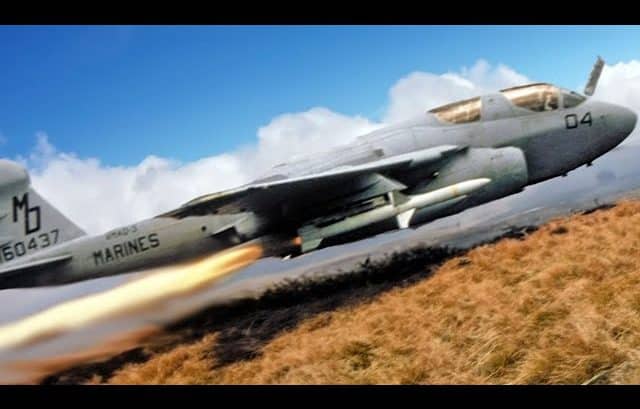The Valkyrie was the biggest and fastest nuclear strike bomber ever made and could fly its entire mission at an impressive Mach 3.
It was a remarkable design with many innovations that pushed the boundaries of aeronautic propulsion and materials.
Wake Vortex
However, the Valkyrie’s history was cut short, and only two of these planes ever flew. One of these was destroyed during a tragic mid-war crash in 1966 while flying in close formation. A key factor in this mid-air crash was the plane’s wake vortex.
Closer Look
Planes disturb the planes they pass through in the process, they create these horizontal mini-tornadoes. A wingtip vortex is the most energetic part of the turbulence.
Wake turbulence can be highly dangerous and violent, and can easily flip a plane upside down. The longer the wing, the smaller the vortex and the less energy is wasted.
Cutting Edge Wonder
The Valkyrie is a cutting-edge plane, but rapid advancements in missile technology meant that it was already obsolete before its first flight.
Instead of canceling the project, two prototypes were built to collect Mach 3 flight test data for use in the design of supersonic flight and propulsion in the future. The first prototype flew in 1964, and the second one was destroyed in a mid-air crash.
Special Features
The Valkyrie had several innovative features. Its windshield and nose ramp pivoted. They’re lowered making it easy for the pilot to see ahead at slow speed, and raised when supersonic for streamlining.
Its wing tips folded in flight, and could be set to 15 to 65 degrees. When lowered, they harnessed compression lift from the supersonic shock wave, enhancing directional stability when flying at Mach 3. The rudders hinge also features a unique forward cunt, allowing finer movement control which is key when traveling so fast.
Unfortunate Accident
On June 1966, the Air Force planned to turn over the second XB-70 to the Flight Research Center for a NASA SST research program. But a photo shoot was first planned. The XB-70 was one of the planes that did a group photoshoot, but soon things started to go wrong.
Flight Research Center chief pilot Joe Walker’s F-104 was suddenly drawn to the Valkyrie and clipped the right wing tip, rolled over, and struck the XB-70’s right vertical fin, It sheered most of the left vertical fin and then exploded as it glanced off the left wing. Walker died during the incident.
Investigation of the incident pointed to the wake vortex of the XB-70’s wingtips to be the cause of the F-104’s rollover into the bomber. Although less is known about wake vortices during that time, it’s now known to be potentially deadly small tornadoes that trail from the plane’s wingtips. This 3D animation explains how wake turbulence played a key role in this tragic crash.



